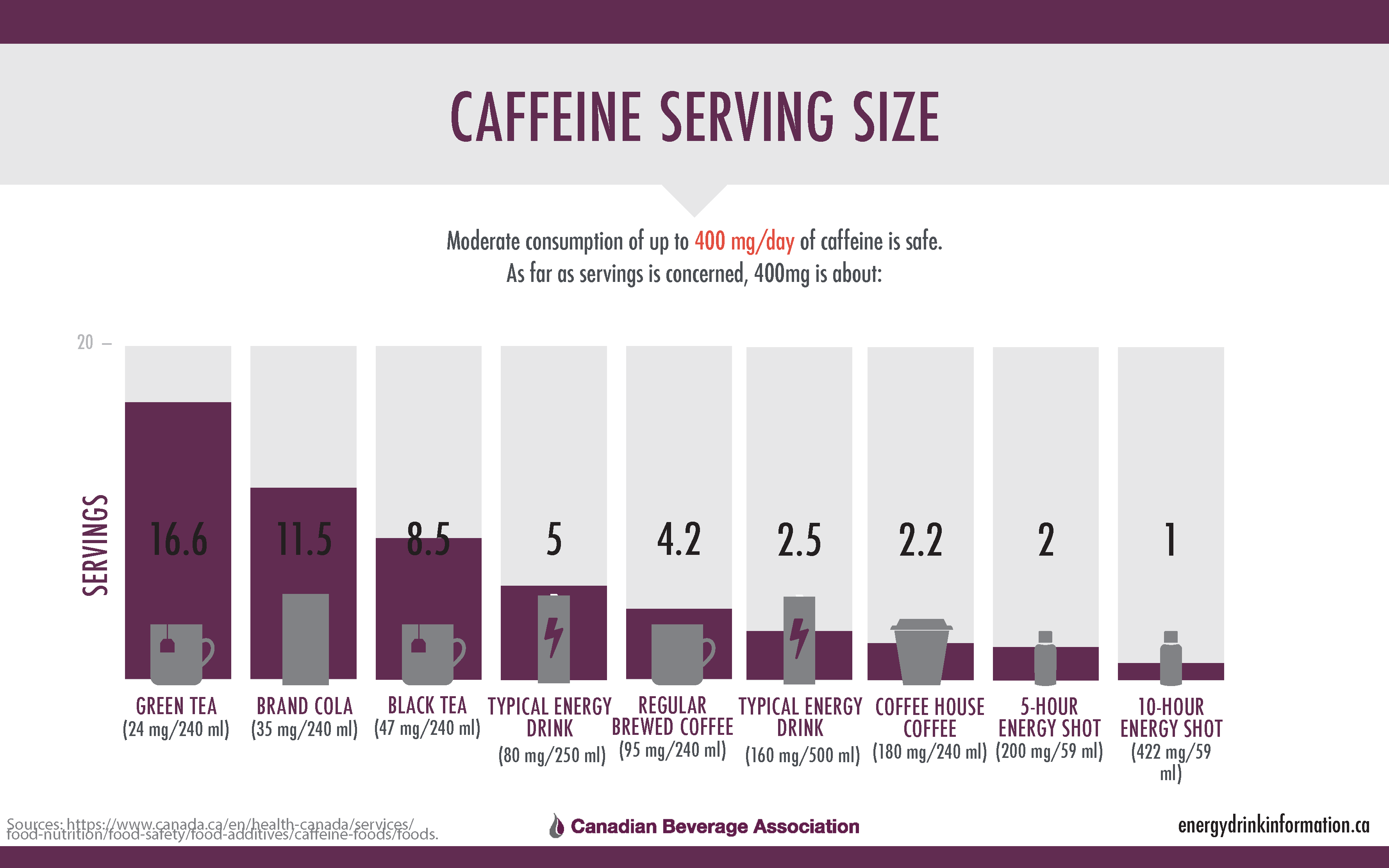“March is Caffeine Awareness Month”
Becki Holmes, MS, RDN, LDN
Founding Principal, Foodwit
As a working mom with two kids, caffeine (in pretty much any form) helps me achieve my daily goals. On the flip side, prioritizing sleep is a year-round combat especially with kids in the equation. It’s not rocket science to know that I’m a better, more productive, and more approachable human after a solid night’s rest. Anyone who knows me also can attest that I’m even more approachable and productive after a solid cup of coffee! But like everything, balance and moderation is key. With March being Nutrition Month and the U.S celebrating Caffeine Awareness Month, it’s the perfect time to reflect on your cup of Joe, fancy cold brew, energy drink or soda, and understand a little more about our old friend caffeine. View Caffeine Awareness Infographic
Health Canada, along with other leading Health Authorities, suggests that up to 400 mg of caffeine daily is considered a moderate and safe amount of caffeine for the general population of healthy adults. And, while 400 mg sounds like a free pass for coffee lovers, caffeine is not for everyone and tolerance may vary from person to person. Some people may be able to enjoy a shot of espresso after dinner and sleep like a baby, while others may experience sleep sensitivity if caffeine is consumed after lunchtime. Like many dietary constituents, the personal challenge is to get the facts so you can understand what works best for you.
Being caffeine-smart starts with knowing where caffeine can be found, and how much is present in foods and beverages. Caffeine has been consumed for centuries from sources like coffee, tea and chocolate. In more modern times, it’s commonplace to find caffeine in products like sodas and energy drinks. Regardless of whether caffeine is naturally occurring or an added ingredient, its effects are identical.
What’s most important to know is that not all products contain the same levels of caffeine – especially when it comes to naturally occurring sources. For instance, coffee brewed at home is generally about 95 mg of caffeine per 236 ml (just under a cup), whereas the same volume of drip coffee purchased at a premium coffee chain could contain up to twice the caffeine, around 180 mg. – New trendy cold-brewed coffees pack a punch at 150 mg per 354 ml. The variations observed in coffees are largely due to the type of coffee bean, grind, water temperature, and steeping time. Cold brew coffees are often steeped for extended periods of time which is why caffeine levels in these products are frequently higher than that of drip coffee.
With variable caffeine amounts in the growing number of coffee preparations and limited caffeine labeling on these products, it’s challenging to understand what may be appropriate to consume. While coffees and teas represent the majority of global caffeine intake, it is more common to see caffeine quantities labeled on retail products. The majority of soft drink and energy drink companies label this information on their products for Canadian consumers making caffeine choices easy to compare. Most major energy drinks contain between 75-100 mg of caffeine per 250 ml – roughly the same as that found in a home brewed cup of coffee, and a 591 ml bottle of Diet Coke which contains 78 mg of caffeine. At the higher end of the spectrum are caffeine-containing dietary supplement products (like energy shots) which can contain up to 300 mg of caffeine per 60 mL shot. While the name sounds similar, these shouldn’t be confused with energy drinks which are regulated as a food product.
Experiencing caffeine’s effects is both learned and personal. Caffeine is enjoyed for its positive attributes affecting mood, motor behavior, vigilance, and cognitive performance. Most people learn quickly that drinking too much caffeine may result in undesired effects like jitteriness or that consuming caffeine too close to bedtime can affect the time it takes to get to sleep and the total amount of sleep achieved. Science says that on average caffeine takes 4-5 hours for the body to clear half of what was consumed. This timeframe can act as a good starting point to self-assess how an afternoon iced tea, cold brew, soda or energy drink might affect your sleep on a given night.
Nutrition month encourages us to reflect on moderation and portion size. Whether treating yourself to a night out at a restaurant, an afternoon chocolate break, or your favorite food or drink, remember the basics: moderation and portion control are key. For caffeinated beverages, mindful portions offering ~75-100 mg of caffeine are the following: Coffee = one cup; Espresso = 2 fl oz shot; Energy Drink = One 250 or 355mL can; Soda = 571 mL bottle.
Beyond caffeine, many caffeinated products also contain added sugar. Here are some easy tips to enjoy caffeine while minimizing empty calories:
- Opt for smaller can sizes; a 250 mL can of soda or energy drink contains about the same amount of sugar as fruit juice.
- Substitute full sugar products for diet or sugar-free alternatives
- Enjoy your coffee black
- Request fewer pumps of syrup in a flavored espresso drink
All in all, caffeine is caffeine despite whether it’s consumed from coffee, tea, soda, energy drinks, chocolate or other formats. Be caffeine-smart by learning how much caffeine is in the products you consume so you know how much is right for you!
Becki Holmes is a Registered Dietitian and the Founder of Foodwit – a consulting firm with a focus on scientific and regulatory services for food businesses.
 Western Grocer Serving the industry since 1916
Western Grocer Serving the industry since 1916












